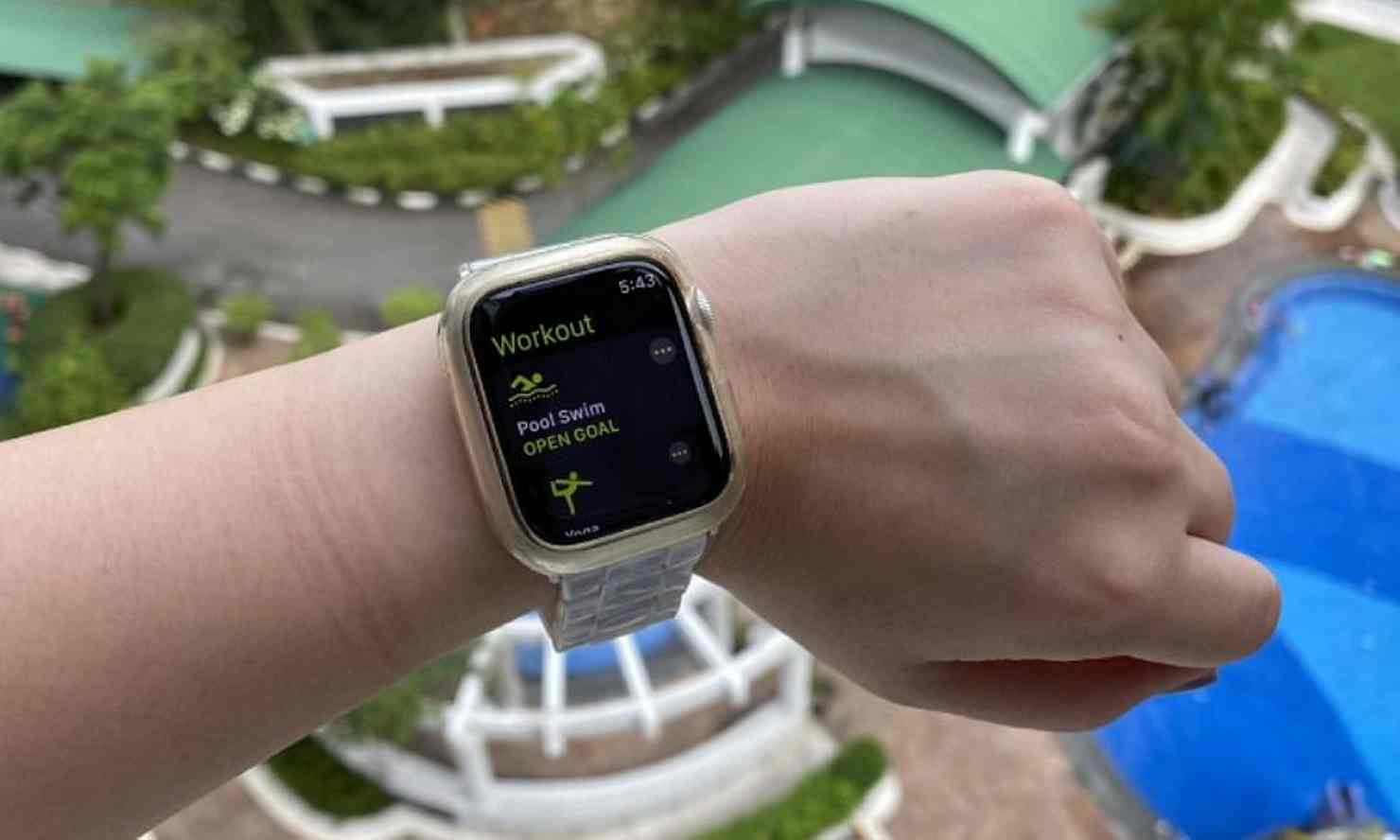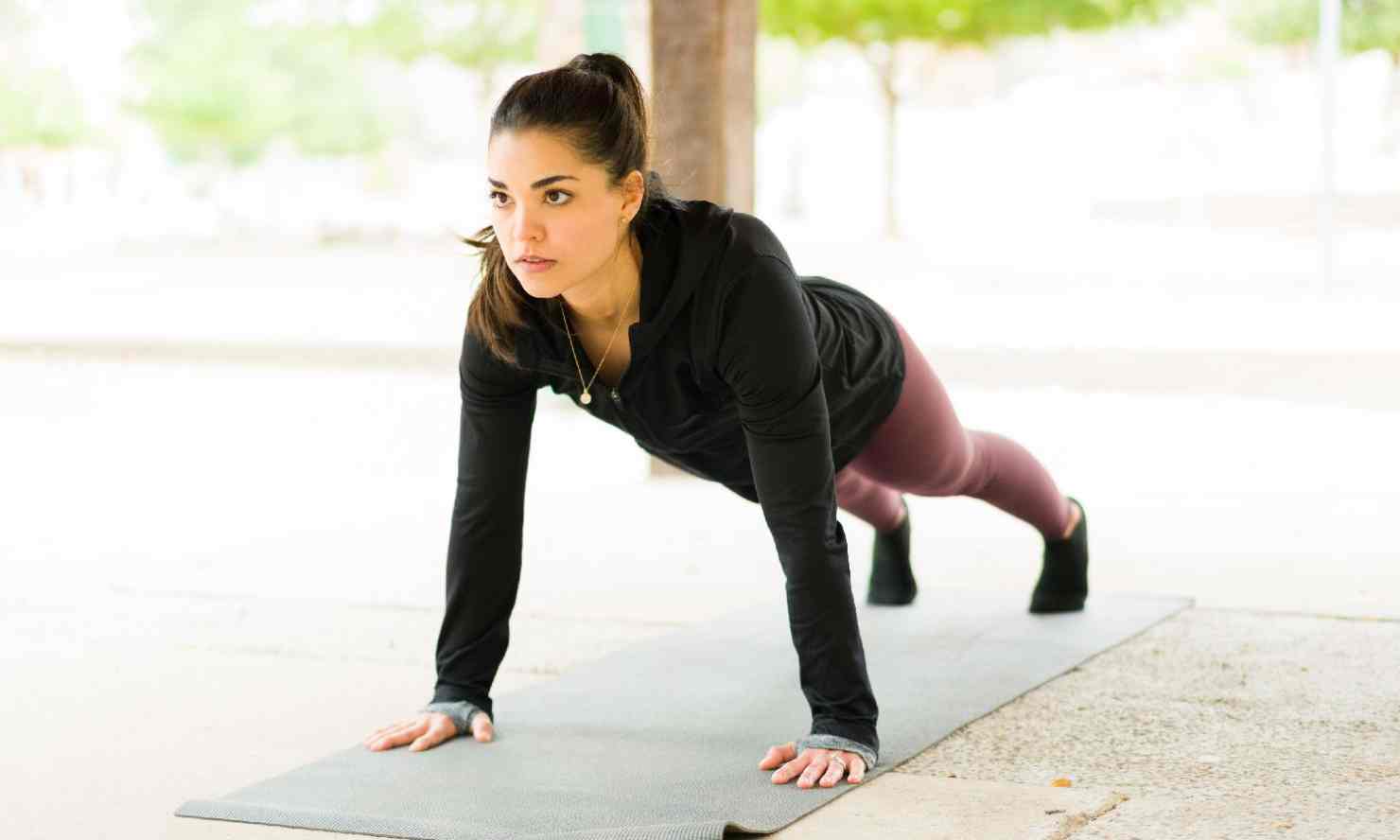Do You Undergo from Extra Supination? Warning Indicators & Cures for This Working Downside

Each supination and pronation are phrases used to explain the rolling movement of the heels and toes through the physique’s gait cycle, which takes place as we run or stroll. Supination describes the rolling outward movement of the foot, subsequently oversupinators don’t roll their toes inward sufficient.
Extra supination can be referred to as “underpronation” — since supination is the other of pronation of the foot (rolling inward). Each oversupination and overpronation put an excessive amount of stress on the beneath or outdoors edges of the foot, typically resulting in leg pains.
For many adults, too little supination is normally extra of an issue than an excessive amount of, however oversupinating the foot can even result in problems. Who tends to battle with supination issues most frequently? Runners with excessive arches (the other of “flat toes” or collapsed arches) and tight Achilles tendons are typically underpronators/supinators.
Among the aches and pains related to supination abnormalities embody:
- rolling or spraining the ankle
- creating “hammertoes” (clawed toes)
- Achilles tendinitis
- working accidents like plantar fasciitis
- shin splints
- iliotibial band syndrome affecting the knees
- basic instability and weak point
The explanation underpronation causes such an array of issues is that the muscle mass within the legs and toes develop into educated to push the foot away from the bottom with principally the outer toes/pinky toes. Contemplating these are typically weak areas of the toes, they have an inclination to bear extra weight and strain than they will deal with, typically inflicting scar tissue to type. Advert
Different overuse accidents can happen, too.
You may see why it’s not simply the toes which are impacted by supination or associated postural issues — however can contribute to muscular compensations that wind up affecting all the physique.
What Is Supination?
Supination (underpronation) is the inadequate inward rolling of the foot after touchdown on the bottom. In comparison with these with “regular,” wholesome posture of the decrease physique, these with oversupination roll the foot outward an excessive amount of (lower than 15 % of an inward roll when touchdown). This causes the ankle and solely a small portion of the outer toes to soak up shock when the foot hits the bottom, typically triggering ache within the ankle, foot and decrease leg.
Because the physique strikes, in an effort to settle for weight onto one leg and propel ahead, a shift in weight should happen on the toes, knees and hips. A pure quantity of supination happens through the push-off part when propelling ahead.
Supination helps the heel raise away from the bottom, which brings the forefoot and toes right down to land in a method that strikes the physique. Nevertheless, an excessive amount of supination contributes to widespread working accidents as a consequence of instability within the ankles.
Weak ankles set the scene for postural issues, as nicely, like an excessive amount of strain utilized to prone areas of the decrease legs and better danger for spraining.
Preserving correct alignment by the midline of the physique, all the way in which from the pinnacle to the toes — by protecting the toes symmetrical and rolling them correctly — is essential for studying regular weight transference, which protects the entire physique, together with the backbone.
Causes and Signs
Among the causes that individuals develop abnormalities associated to pronation, supination, dorsiflexion and different motions of the toes or legs embody:
- Genetics (genetics have an effect on the size of the legs, width of the toes, stability of the ankles and curvature of the foot’s arches, for instance)
- Strolling on flat, laborious surfaces (relatively than pure terrain)
- Sporting worn-out sneakers or these which are unsupportive
- Muscular compensations as a consequence of poor posture within the legs, sacrum and backbone
- Outdated accidents, together with ankles sprains, stress fractures within the legs or tendon tears, which may go away scar tissue behind that causes instability
- Poor type when working or exercising
- Overuse, together with exercising an excessive amount of or standing for lengthy durations
- Restricted vary of movement and stiffness as a consequence of growing old
- Free ligaments or lack of cartilage within the joints of the toes or ankles (equivalent to these of the subtalar joint)
- In some instances, leg discrepancy (legs are totally different lengths)
- Weak point within the ankles or decrease physique from too little exercise (a sedentary life-style)
Listed here are some widespread indicators that you just’re seemingly an over-supinator (underpronator)
- Frequent ankle sprains
- Ache beneath the toes (within the ball of the foot) or ache typically within the ankles
- Clawed toes/hammertoes
- Throbbing or weak point will get worse when working, strolling, exercising or standing for a very long time
- Dysfunctional musculoskeletal issues within the ankles, calves, outer thighs or knees
- Swelling within the ankle, foot or heel — typically the toes are affected as nicely and develop calluses or bunions
- Lack of performance and decreased vary of movement within the decrease physique
Supination vs. Dorsiflexion
- Supination and dorsiflexion are phrases associated to movement and stability of the toes and ankles. (They will typically even be utilized to different physique components that bend again, just like the palms)
- Deviations (irregular quantities) of ankle supination or dorsiflexion are normally used to explain type and postural issues that trigger widespread working accidents when the foot strikes the bottom. These can embody accidents like plantar fasciitis, shin splints, runner’s knee, heel spurs and Achilles tendon pains, amongst others.
- Whereas supination describes the outward rolling movement of the foot, dorsiflexion describes the bending backward of the foot. Dorsiflexion decreases the angle between the foot and the ankle. In different phrases it means the toes are lifting up and away from the bottom, towards the ankle/physique.
- Correct dorsiflexion can be wanted to deliver the knees over the ankles, equivalent to when bending over, squatting or leaping ahead.
- Irregular dorsiflexion, or backward flexion of the foot, is a typical drawback associated to not solely working accidents, however these brought on throughout different sports activities/workout routines. Correct mobility of the ankle is essential for permitting the physique to propel ahead, particularly when leaping, sprinting or working rapidly.
- With out sufficient ankle dorsiflexion, it’s additionally laborious to maintain correct type when performing resistance coaching utilizing the knees, equivalent to squatting or lifting weights. The torso can’t stay vertical as a consequence of stiffness within the ankles (too little dorsiflexion), subsequently you’ll be able to’t preserve a impartial backbone. The knees can even collapse, which provides stress to the again.
- However, an excessive amount of dorsiflexion can be problematic. Stability is equally necessary within the ankles, as a result of an excessive amount of movement as a consequence of weak point within the muscle mass and joints of the toes can contribute to ankle rolling or spraining, together with signs of runner’s knee.
Typical Remedies
In case your orthopedic, bodily therapist, coach or one other physician sees indicators of irregular supination or dorsiflexion in your toes, he or she will seemingly suggest bettering your type and sporting extra supportive sneakers with inserts. Altering your sneakers/sneakers when exercising is normally step one, which makes orthotics much more efficient.
Orthotic inserts utilized in sneakers or sneakers include arch assist and typically a lifted heel to manage the rolling-forward movement of the foot. They will take strain off the small toes and assist stabilize the ankle. That is useful for safeguarding the knees and again throughout actions equivalent to working or lifting weights.
Think about using orthotics in case your physician thinks they is likely to be useful for bettering consolation throughout standing for lengthy durations, decrease again ache reduction or lowering heel ache.
Relying on how extreme your supination drawback is, your physician may also suggest bodily remedy. Bodily remedy can “reteach” your muscle mass and joints find out how to distribute your weight in a more healthy method, beginning out of your toes upward, permitting you to maintain correct type all through your sacrum, pelvis and backbone.
5 Pure Methods to Create Correct Supination
1. Repair Your Kind
Listed here are some suggestions for serving to you to right your stance, which is the groundwork for studying correct working/strolling type. Correct type and posture by the backbone are particularly necessary when including further strain or weight to the toes, equivalent to if you’re lifting weights or sprinting very quick.
- When working or strolling quick, goal to decrease the toes with a delicate touchdown. Some attempt to picture “working on eggshells” or making an attempt to run on water. Stay mild in your toes as an alternative of pounding the toes too laborious onto the bottom.
- Give attention to touchdown nearer to your midfoot, relatively than behind the heel. Attempt to land with a principally flat foot, making an attempt to keep away from an excessive amount of curving of the toes inward or outward or touchdown an excessive amount of to the aspect of the foot.
- Barely improve your cadence, and doubtlessly shorten your stride to maintain correct type within the toes and legs.
- Run with upright posture by your again, and keep relaxed.
2. Stretch to Loosen Tight Muscle tissue (Together with the Ankles)
Supinators ought to do further stretching for the calves, hamstrings, quads and iliotibial band (mainly the entire leg). Gently stretching/mobilizing muscle mass within the legs helps break up adhesions and permits you to maintain correct type extra simply. Stretching the ankles can even enhance dorsiflexion, or ankle mobility/stability. Advert
Many delicate tissue therapists and bodily therapists suggest beginning any exercise by massaging sore toes, loosening the ankles and stretching tight calves. Since weak, stiff ankles are sometimes one of many main contributing components that trigger supination issues, you can too add a few of these leg stretches to your common exercises:
- Use a foam curler on the ground, positioning your physique on prime so the curler is underneath your calves, then transferring backwards and forwards gently. You may observe the identical on the again or sides of the calves too. Roll the realm, and maintain tender spots for 30 to 60 seconds, repeating as much as 5 instances day-after-day. This must be accomplished proper earlier than stretching.
- Strive massaging the fascia (delicate tissue) within the underpart of the toes with a tennis ball underneath the foot as you roll round whereas making use of gentle strain.
- Get into pushup place, after which stroll your toes ahead barely to come back onto the balls of your toes (holding an the other way up “V” along with your physique). Raise the heels away from the bottom as you steadiness on the balls of your toes, after which decrease them again down once more. Repeat about 10 instances, greater than as soon as a day if you happen to’d like.
- As you lay in your again, raise the legs within the air, and flex the ankles backwards and forwards. Or make small circles (turning toes towards your physique and away). Repeat for a number of minutes.
- Place your toes up towards a wall, tilting the toes again towards the physique. This releases the ankles and opens up the calves.
- Use a resistance band (also called train band) wrapped across the ankle to softly pump and enhance ankle flexibility.
- Do primary heel raises by elevating and reducing your heels and toes to the bottom, then again up. Do 10 to fifteen at a time. Strive utilizing a step if you happen to’d like.
- Sitting up on one shin, bend the other knee, and slowly deliver the knee previous the ankle, rocking the knee backwards and forwards to enhance dorsiflexion.
- Stand with straight legs, and bend ahead from the waist to the touch the ground or shins. This helps stretch the hamstrings. Maintain for 20 to 30 seconds. You too can preserve your legs vast aside with toes dealing with outward barely to loosen the internal leg and hamstrings.
3. Strengthen the Leg Muscle tissue for Extra Assist
Energy-building leg workout routines to assist scale back muscular weak point within the ankles and calves embody:
- Squats — All kinds of squats require correct mobility and stability within the ankles (dorsiflexion) and in addition improve power in nearly each a part of the legs. Strive primary squats or squatting whereas lifting weight overhead. Preserve the tailbone tucked and core tight to guard the again.
- Lunges — Aspect lunges, lunge dips or lunge twists.
- Crab crawls — Bend your knees, and produce your palms behind you, squatting down in entrance of your arms. Use your palms on the bottom that will help you stretch the ankles backwards and forwards to extend vary of movement. You may keep on this place whereas stretching the heels and toes.
- Calf raises — Carry out light calf raises by lifting your heel off the ground, then reversing and lifting/pointing the toes towards the ceiling. Ensure you really feel a stretch in your calf muscle. Maintain for 30 seconds, thrice per leg.
- Doing any sort of burst coaching, HIIT exercises or sprints (good for the entire decrease physique).
4. Put on the Proper Sneakers (Not Worn-Out Sneakers!)
Podiatrists normally suggest extra versatile, light-weight sneakers for underpronators, particularly those that spend numerous time on their toes (together with runners or those that do numerous brisk strolling). Light-weight sneakers can face up to extra movement of the ankle whereas nonetheless supporting the toes, particularly these with versatile internal edges.
For individuals with wobbly, weak ankles, higher-top sneakers that stabilize the ankles is likely to be a more sensible choice.
Indicators of underpronation/supination will present up in your sneakers or sneakers, normally inflicting the outer fringe of the shoe to develop into flimsy extra rapidly. Exchange your sneakers commonly, particularly if you happen to train or run typically. To see if you happen to’re due for a brand new pair, place your sneakers down on a flat floor, and search for the periphery to tilt outward.
Along with sporting the proper sneakers, think about using a few of these inserts:
- Orthotic inserts
- Inserts to raise the heels (deep heel cups)
- Lateral insoles that cease foot rolling
You may additionally need to take into account easing in to barefoot working — a phenomena rising in reputation amongst these with recurring working accidents. Working barefoot could seem even riskier than sporting the fallacious sneakers, however it really helps the toes study correct type extra simply, builds power all through the ankles and toes, and helps improve pure vary of movement (supination and dorsiflexion).
5. Start Train Regularly and Relaxation to Stop Accidents
In the event you’re new to extra vigorous kinds of exercising — equivalent to working, climbing or strolling uphill — or spending extra time in your toes, attempt to preserve the following tips in thoughts:
- Aways heat up with a dynamic stretch (described above). Loosening the ankles and calves is most necessary.
- Set a aim to observe persistently, however give your self relaxation in between to keep away from including an excessive amount of stress to connective tissue. In case your toes, ankle or leg muscle mass develop into too fatigued or swollen, you’ll be extra prone to develop scar tissue and fall into improper type.
- Incorporate burst coaching and cross-train utilizing totally different workout routines to strengthen throughout, as an alternative of solely sure leg muscle mass.
- Select the proper sneakers and sneakers. (I can’t stress this sufficient.)
- Be careful for uneven or laborious surfaces which will make your type and foot ache worse.
- Take heed to your physique. Take day off if ache worsens and spreads up the legs.
- After exercises, icing, massaging your calves and toes, plus foam rolling are easy methods to get better and assist stop swelling and tightness.
Precautions
If foot/ankle ache will get worse and lasts for greater than a number of days otherwise you discover that the workout routines above don’t assist stop ankle rolling, speak to a physician about correcting your stance with orthotics.
All the time watch out when starting any new train program, be careful for indicators of irritation and overuse, and take into account seeing a therapist who makes a speciality of delicate tissue therapies if supination/dorsiflexion is an ongoing drawback.
Last Ideas
- Supination and pronation are phrases used to explain the rolling movement of the heels and toes as we run or stroll ahead. Supination describes the rolling outward movement of the foot, whereas pronation describes the rolling inward. Extra supination can be referred to as “underpronation,” a much less widespread drawback in comparison with overpronation.
- Indicators and signs of oversupinating embody ankle, leg or heel ache; frequent rolling/spraining of the ankles; calf weak point and tightness; decreased vary of movement when exercising or lifting weights; and lack of performance.
- Pure methods to enhance supination embody exercising and stretching the ankles, calves and decrease physique; sporting correct sneakers/sneakers; utilizing correct shoe inserts (orthotics); and correcting your type when working.





